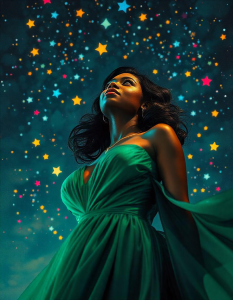9 Conclusion

Involved in more than the politics of resistance, subversion, and revolution that have characterized Black theatre and playwriting since William Brown’s underground African Grove Theatre in the nineteenth century, contemporary Black female playwrights (namely Suzan-Lori Parks, Cheryl West, Aishah Rahman, Dael Orlandersmith, and Velina Hasu Houston (who is included for the first time) are engaged in response writing in which the mother characters, in particular, reply to that which they have experienced as Black (and multiracial) women in America.
Just as plays by Mary Burrill, Zora Neale Hurston, May Miller, Angelina Grimké, Georgia Douglas Johnson, and others anticipated Lorraine Hansberry’s A Raisin in the Sun, the play for colored girls who have considered suicide when the rainbow is enuf by Ntozake Shange anticipated works by Parks, West, Rahman, Orlandersmith, and Houston, among others. As part of the new Black female playwrights’ dramatic aesthetic, issues of skin color, marginalization, coming of age, suicide, social pressures and perceptions, and family dislocation resurface and take new forms. Buried deep in the (con)text of these contemporary plays, postmodern and postcolonial thought and theories give birth to other tenets of the aesthetic, such as new constructions of language, action, and history that celebrate ancestry, memory, imagination, and realism while disrupting the linear European narrative of history. This new aesthetic counters presentations of the happy, upwardly mobile Black family drawn frequently in past-era plays and affirms instead that there is not one homogenized Black history but instead multiple histories, some pleasant and some unpleasant.
Most critics agree that, generally, plays mirror the times in which they are written. Perhaps this is why many of the themes and preoccupations regarding motherhood are present in the work of these Black female playwrights and others. Their individual plays, when viewed together, form a collective mosaic that characterizes the aesthetic of their twenty-first-century playwriting tradition. The playwrights featured in this collection assert an aesthetic that addresses the political dominance of people with money and power, and the impoverishment and affliction of people without it.
Despite the despair of this argument, all is not lost. Contemporary Black women playwrights, in the process of throwing up a highway through the wilderness, have embarked upon journeys of (self)exploration in which they are working out their life’s complexities—and in some cases ours, too—to remain and/or become whole. In a different way from Shay Youngblood, whose uplifting and celebratory play “Shakin’ the Mess Outta Misery” dramatizes the beauty and effectiveness of a communal sense of motherhood, the plays included in this collection are “shakin’ the mess outta misery” in order to clear a space in modern-day society for a resurgence of traditional motherly love, affection, and nurturing. Similar to Glenda Dickerson and Breena Clarke’s play “Re/membering Aunt Jemima: A Menstrual Show” (emphasis mine), the aforementioned plays by Parks, West, Rahman, Orlandersmith, and Houston re-figure, re-present, and re-envision womanhood and motherhood as a contemporary aesthetic that brings the past with it and renames it in order to celebrate its traditions and morals.
After recognizing the traditional constructs of motherhood and its challenges, it is important for the community to adjust its efforts toward these women. Perhaps this is the primary lesson of the plays. Perhaps secondary lessons are these:
- All mothers need and deserve societal support, no matter the pathways they choose for their lives. This is not to say that careless, negligent, and irresponsible mothers should be revered and respected. They should not, as is the case with the mothers in Alabama Rain by Velina Hasu Houston and Monster by Dael Orlandersmith. Yet, every mother-child relationship is unique. Given that most mothers have direct influence over the care, protection, and well-being of their children (particularly their girl children), all mothers deserve support (at least).
- Fatherly involvement is vital and necessary not only for the well-being of the children, but also for the women who become mothers. In The Mojo and the Sayso and Before It Hits Home, for instance, the father figures play a significant role in how the mother characters and their sons cope with and adapt to news of tragedy. Both plays highlight the ways in which masculinity can be redefined and expanded when rigid, traditional gender roles are reconsidered.
So it stands that the innovative Black women playwrights included in this work are involved not only in movements of social change that resonate in today’s twenty-first-century American milieu, but also in throwing up a highway through the wilderness by forging diverse personal and professional pathways and by crafting a new aesthetic that is complicated by gender. In an extraordinary act of courage, these playwrights are exposing the personal and the private in a political manner that is moving Black women out of the shadows and into the forefront where their collective concerns can be primary.
So they are “throwing up a highway,” like Zora Neale Hurston’s Janie in Their Eyes Were Watching God. In plays where Black people, Black women, Black mothers are preoccupied with each other; where they are sifting through memory, family, history, and the past; revising themselves and their situations; and running from or toward that which is new and/or terrifying, these women characters negotiate life.
Some of these plays are hopeful, some of them realistic, some of them naturalistic; but in almost every case, their authors—the Black female playwrights—are throwing up a highway through the wilderness in route to the Promised Land where they, like Hurston’s expectant Janie Crawford in the early twentieth century, learn to speak for themselves, exist in a world that is still learning to embrace them, and carve out a respected space for their work and aesthetic in the contemporary dramatic and literary canons.



